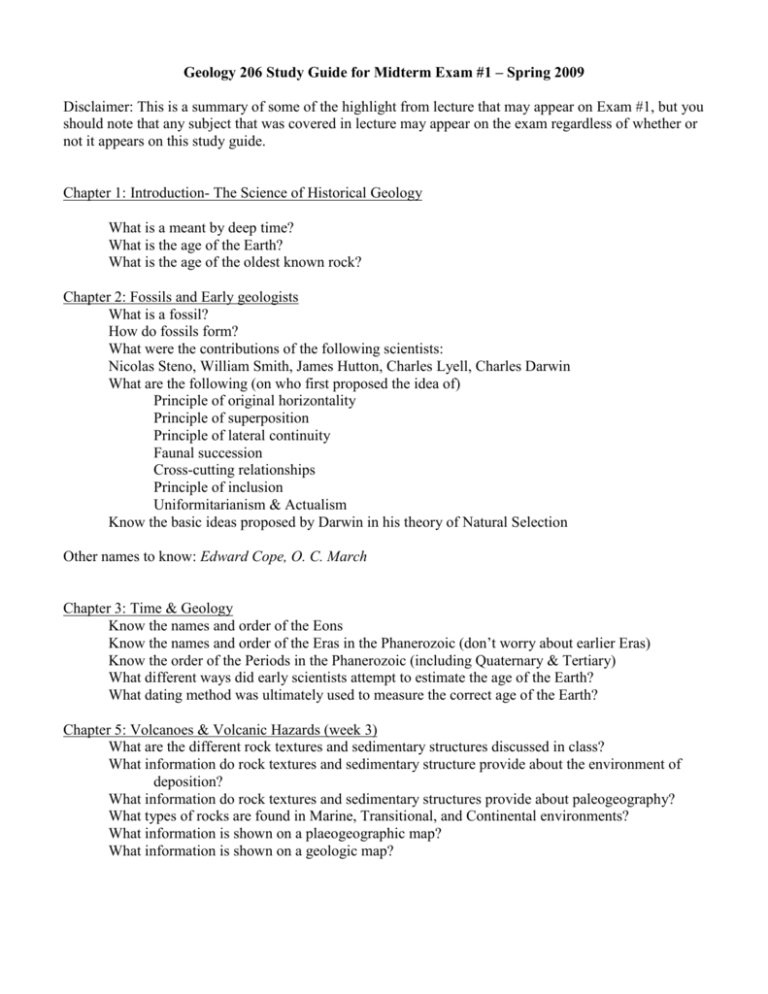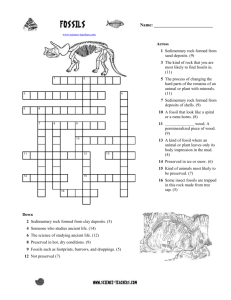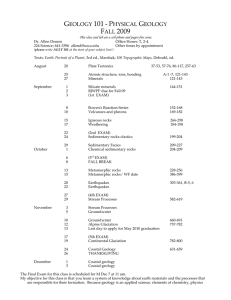Study Guide for Midterm Exam #1
advertisement

Geology 206 Study Guide for Midterm Exam #1 – Spring 2009 Disclaimer: This is a summary of some of the highlight from lecture that may appear on Exam #1, but you should note that any subject that was covered in lecture may appear on the exam regardless of whether or not it appears on this study guide. Chapter 1: Introduction- The Science of Historical Geology What is a meant by deep time? What is the age of the Earth? What is the age of the oldest known rock? Chapter 2: Fossils and Early geologists What is a fossil? How do fossils form? What were the contributions of the following scientists: Nicolas Steno, William Smith, James Hutton, Charles Lyell, Charles Darwin What are the following (on who first proposed the idea of) Principle of original horizontality Principle of superposition Principle of lateral continuity Faunal succession Cross-cutting relationships Principle of inclusion Uniformitarianism & Actualism Know the basic ideas proposed by Darwin in his theory of Natural Selection Other names to know: Edward Cope, O. C. March Chapter 3: Time & Geology Know the names and order of the Eons Know the names and order of the Eras in the Phanerozoic (don’t worry about earlier Eras) Know the order of the Periods in the Phanerozoic (including Quaternary & Tertiary) What different ways did early scientists attempt to estimate the age of the Earth? What dating method was ultimately used to measure the correct age of the Earth? Chapter 5: Volcanoes & Volcanic Hazards (week 3) What are the different rock textures and sedimentary structures discussed in class? What information do rock textures and sedimentary structure provide about the environment of deposition? What information do rock textures and sedimentary structures provide about paleogeography? What types of rocks are found in Marine, Transitional, and Continental environments? What information is shown on a plaeogeographic map? What information is shown on a geologic map?











